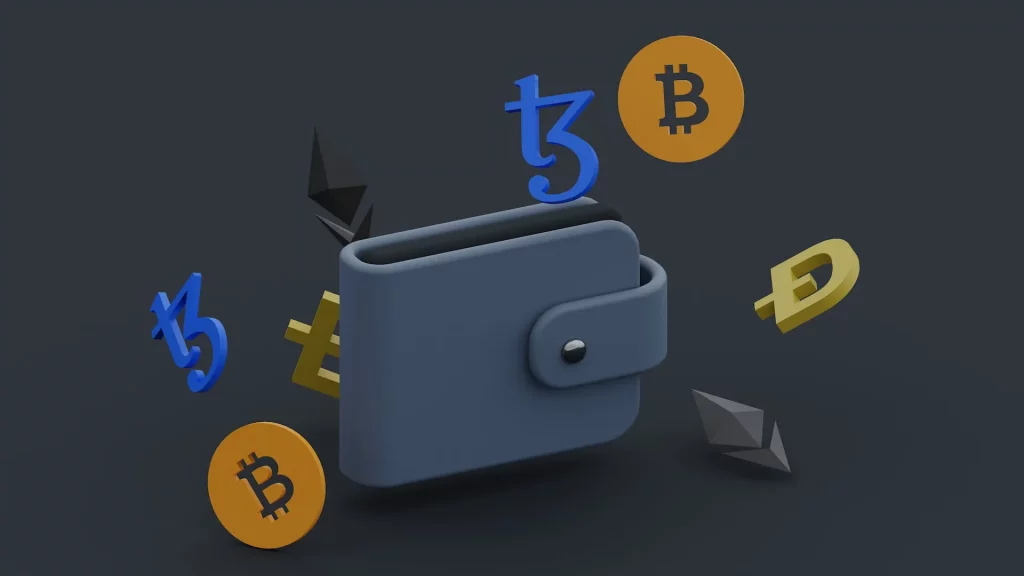Cryptocurrency has emerged as a revolutionary asset class that has captured the attention of investors worldwide. With the rise of Bitcoin and thousands of altcoins, many are eager to dive into this dynamic market. However, starting your investment journey in cryptocurrency can seem daunting due to its complexity and volatility. This comprehensive guide will help you understand the essentials of cryptocurrency and provide you with the knowledge to begin investing wisely.
Understanding Cryptocurrency: What You Need to Know
Before investing in cryptocurrency, it’s essential to grasp what it is and how it works.


What is Cryptocurrency?
Cryptocurrency is a digital or virtual currency that uses cryptography for security. Unlike traditional currencies issued by governments (fiat currency), cryptocurrencies operate on decentralized networks based on blockchain technology.


Key Features of Cryptocurrency
- Decentralization: Most cryptocurrencies are not controlled by any central authority, which helps prevent fraud and manipulation.
- Anonymity: Transactions can be conducted with a level of privacy, as users are often identified by their public keys rather than personal information.
- Limited Supply: Many cryptocurrencies have a capped supply, which can create scarcity and potentially increase value over time.
Resource: To learn more about the underlying technology, check out this blockchain explainer.


Why Invest in Cryptocurrency?
Investing in cryptocurrency can offer unique advantages, but it also comes with risks. Here’s why many investors are considering it:
Benefits of Cryptocurrency Investment
- High Potential Returns: Cryptocurrencies have shown remarkable growth, with Bitcoin increasing from a few cents in 2010 to tens of thousands of dollars today.
- Portfolio Diversification: Adding cryptocurrency to your investment portfolio can provide diversification, potentially reducing overall risk.
- Inflation Hedge: Some view cryptocurrencies like Bitcoin as a hedge against inflation, as their supply is often limited compared to fiat currencies.
Risks of Cryptocurrency Investment
- Volatility: Cryptocurrency prices can be highly volatile, leading to significant fluctuations in value.
- Regulatory Uncertainty: Governments worldwide are still formulating regulations regarding cryptocurrency, which could impact prices and usage.
- Security Concerns: Cryptocurrency exchanges and wallets can be vulnerable to hacks and scams.
Tip: Always invest what you can afford to lose, especially in such a volatile market.


Step 1: Research and Educate Yourself
Before diving into cryptocurrency investments, take the time to educate yourself. Here are key areas to focus on:
Learn the Basics of Cryptocurrency
Familiarize yourself with fundamental concepts such as:
- Wallets: Understand the difference between hot wallets (online) and cold wallets (offline).
- Exchanges: Learn about platforms where you can buy, sell, and trade cryptocurrencies, such as Coinbase, Binance, and Kraken.
Explore Different Cryptocurrencies
While Bitcoin is the most recognized cryptocurrency, thousands of alternatives (altcoins) exist. Consider researching:
- Ethereum (ETH): Known for its smart contract functionality.
- Litecoin (LTC): Designed for faster transactions.
- Ripple (XRP): Focused on facilitating international payments.
Resource: Use sites like CoinMarketCap to track different cryptocurrencies and their market performance.


Step 2: Set Up a Cryptocurrency Wallet
A cryptocurrency wallet is a digital tool that allows you to store, send, and receive cryptocurrencies securely. Here’s how to set one up:
Choosing a Wallet Type
- Software Wallets: These are applications or online platforms that allow easy access and transactions. Examples include Exodus and MyEtherWallet.
- Hardware Wallets: These are physical devices that provide enhanced security by storing your cryptocurrency offline. Popular options include Ledger Nano S and Trezor.
- Paper Wallets: A more advanced option where your private keys are printed on paper for offline storage.
Setting Up Your Wallet
- Choose a Wallet: Select a wallet that suits your needs based on security and ease of use.
- Follow Setup Instructions: Each wallet will have its own setup process, typically requiring you to create an account and back up your keys.
- Secure Your Wallet: Enable two-factor authentication (2FA) and keep your recovery phrases secure.
Tip: Always back up your wallet and store your recovery phrases in a safe place.


Step 3: Select a Cryptocurrency Exchange
Once you have a wallet set up, you need to select a cryptocurrency exchange where you will buy and sell your assets. Consider the following factors when choosing an exchange:
Key Features to Look For
- Reputation: Choose exchanges with a solid reputation and a track record of security.
- User Interface: Select an exchange that offers an intuitive interface, especially if you are a beginner.
- Fees: Compare transaction fees, deposit fees, and withdrawal fees, as these can affect your overall returns.
Recommended Cryptocurrency Exchanges
- Coinbase: A user-friendly platform ideal for beginners.
- Binance: Offers a wide range of cryptocurrencies and lower fees.
- Kraken: Known for its security features and a good selection of coins.
Resource: For a comprehensive list of exchanges, check out CoinGecko.


Step 4: Start Investing in Cryptocurrency
Now that you have a wallet and an exchange, it’s time to start investing. Follow these steps:
1. Create an Account on the Exchange
- Register on your chosen exchange, providing the required information for identity verification.
- Complete the verification process as required by the platform.
2. Fund Your Account
- Link your bank account, credit card, or other payment methods to deposit funds into your exchange account.
3. Place Your First Trade
- Decide on the amount you want to invest and choose the cryptocurrency you wish to buy.
- Review the transaction details and confirm the purchase.
4. Transfer to Your Wallet
After purchasing, consider transferring your cryptocurrency from the exchange to your wallet for added security.
Tip: Consider starting with a small investment to familiarize yourself with the process before committing larger sums.


Step 5: Monitor and Manage Your Investments
Cryptocurrency investments require ongoing monitoring and management to ensure you’re on track to meet your financial goals. Here are some tips:
Regularly Review Your Portfolio
- Track Performance: Use portfolio tracking tools such as Blockfolio or Delta to monitor your investments.
- Stay Informed: Keep an eye on market trends, news, and events that could affect the cryptocurrency market.
Consider a Long-Term Strategy
While day trading can be tempting, many successful investors adopt a long-term strategy, holding assets for months or years. This approach can mitigate the impact of short-term volatility.
Resource: Read about investment strategies on NerdWallet.


Step 6: Stay Informed About Risks and Regulations
The cryptocurrency landscape is continuously evolving, and staying informed about potential risks and regulatory changes is crucial:
Be Aware of Security Risks
- Phishing Attacks: Always double-check URLs and avoid clicking on suspicious links.
- Scams: Be wary of investment schemes promising guaranteed returns or high profits.
Understand Regulatory Changes
- Cryptocurrency regulations vary by country and can significantly impact the market. Stay informed about regulations in your region to ensure compliance and make informed decisions.
Resource: For the latest news on cryptocurrency regulations, visit CoinDesk.


Conclusion: Your Journey Into Cryptocurrency Investment
Investing in cryptocurrency can be a rewarding venture if approached with knowledge and caution. By understanding the basics, setting up secure wallets and exchanges, and remaining vigilant about market changes and risks, you can position yourself for success in the ever-evolving world of digital currencies.
Start small, stay educated, and as you gain confidence, you can expand your investments and potentially reap significant rewards. With dedication and the right strategies, your journey into cryptocurrency investment can lead to exciting opportunities for financial growth.
4o mini
